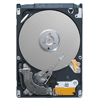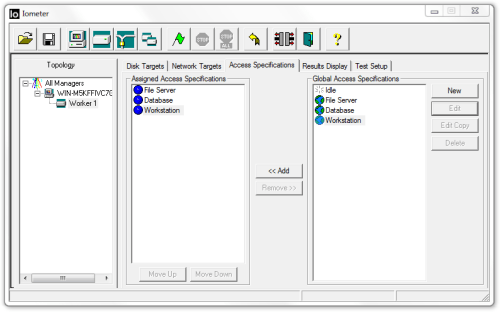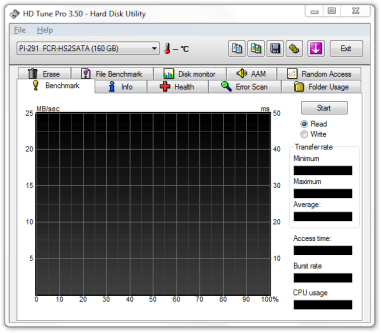- Qualcomm Launches Snapdragon 4 Gen 2 Mobile Platform
- AMD Launches Ryzen PRO 7000 Series Mobile & Desktop Platform
- Intel Launches Sleek Single-Slot Arc Pro A60 Workstation Graphics Card
- NVIDIA Announces Latest Ada Lovelace Additions: GeForce RTX 4060 Ti & RTX 4060
- Maxon Redshift With AMD Radeon GPU Rendering Support Now Available
Seagate Momentus XT 500GB

The allure of an SSD is one that’s difficult to ignore, but with pricing still in the realm of limited adoption, many are choosing to wait things out. But what about taking a baby step into the SSD world, with a hard drive that equips a mechanical design with some NAND flash to speed things up? We’re taking a look at Seagate’s solution.
Page 4 – Synthetic: Iometer & HD Tune Pro
Iometer 2006.07.27
Originally developed by Intel, and since given to the open-source community, Iometer (pronounced “eyeawmeter”, like thermometer) is one of the best storage-testing applications available, for a couple of reasons. The first, and primary, is that it’s completely customizable, and if you have a specific workload you need to hit a drive with, you can easily accomplish it here. Also, the program delivers results in IOPS (input/output operations per second), a common metric used in enterprise and server environments.
The level of customization cannot be understated. Aside from choosing the obvious figures, like chunk sizes, you can choose the percentage of the time that each respective chunk size will be used in a given test. You can also alter the percentages for read and write, and also how often either the reads or writes will be random (as opposed to sequential). I’m just touching the surface here, but what’s most important is that we’re able to deliver a consistent test on all of our drives, which increases the accuracy in our results.
Because of the level of control Iometer offers, we’ve created profiles for three of the most popular workloads out there: Database, File Server and Workstation. Database uses chunk sizes of 8KB, with 67% read, along with 100% random coverage. File Server is the more robust of the group, as it features chunk sizes ranging from 512B to 64KB, in varying levels of access, but again with 100% random coverage. Lastly, Workstation focuses on 8KB chunks with 80% read and 80% random coverage.
Because these profiles aren’t easily found on the Web, with the same being said about the exact structure of each, we’re hosting the software here for those who want to benchmark their own drives with the exact same profiles we use. That ZIP archive (~3.5MB) includes the application and the three profiles in an .icf file.



HD Tune Pro 3.5
HD Tune has long been one of our favorite storage benchmarks, thanks in part to its ease-of-use and its ability to deliver consistent results (which is obviously important). Like Iometer, no partition is created on the drive while benchmarking with this application, as the write tests will not work any other way. There are absolutely no performance gains from not having a partition, as HD Tune does its thing below the file system level during its write tests.
For our tests with HD Tune, we use both the “Benchmark” and “File Benchmark” (the latter is available in the Pro version only), as the latter gives us a bit more control over file sizes. From the Benchmark section, we gather both the read and write Min/Avg/Max results, and also the access time, and for the File Benchmark section, we run a file length of 1MB and 64MB, and record the results from the 4KB, 64KB, 512KB and 1MB chunk sizes.







Iometer was unable to take advantage of the NAND memory at all, likely due to its larger-than-4GB test size. Here, the XT performed marginally better than the 7200.4 as well as the 5400.6. This was also the same when it came to HD Tune results. Again, it maintained a noticeable lead over the other 2.5″ drives tested, but it was outpaced by its desktop counterparts. Repeated runs did not yield additional performance gains with these tests.
Support our efforts! With ad revenue at an all-time low for written websites, we're relying more than ever on reader support to help us continue putting so much effort into this type of content. You can support us by becoming a Patron, or by using our Amazon shopping affiliate links listed through our articles. Thanks for your support!






